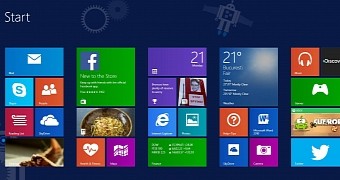Microsoft decided in 2014 to release a free version of Windows 8.1 that would be offered free of charge or for a very small fee to manufacturers, with the sole purpose of bringing more affordable devices powered by its operating system to the market.
It turns out that Redmond's strategy is paying off these days, as new statistics provided by analysis firm Context reveal that Windows 8.1 with Bing is keeping the PC market alive these days.
Sales of new notebooks in the first quarter of the year grew up 26 percent to reach 644,304 units, whereas shipments of the traditional PCs stagnated at 237,700 units. There's also a dropping trend as far as tablets are concerned, with initial figures pointing to a decline of 11 percent to 403,307 units.
Lachlan Welsh, an analyst at Context, explained that these results were only possible thanks to Windows 8.1 with Bing, which obviously increased demand for new devices available at more affordable prices.
Sales of Windows devices alone grew by no more, no less than 244 percent, which is clearly a pretty significant achievement for Microsoft and its partners in the fight against Android and iOS.
Bing-branded version of Windows 10 also coming
According to leaked documents, Microsoft might be planning to release a Bing-branded version of Windows 10 as well, again in an attempt to boost sales of devices running its new operating system and increase its market share as much as possible.
Details regarding the price of Windows 10 with Bing are not available right now, but as is the case of Windows 8.1, expect it to be offered free of charge or with a small fee to manufacturers.
Windows 8.1 with Bing is a stand-alone SKU of the core Windows 8.1, which comes with Bing configured as the default search engine in Internet Explorer. Users are allowed to change Bing and switch to Google if they want, but Microsoft hopes that this way more people would give its search engine a shot.
Windows 10 is projected to launch in the second half of 2015, after eventually reaching RTM in June.

 14 DAY TRIAL //
14 DAY TRIAL //